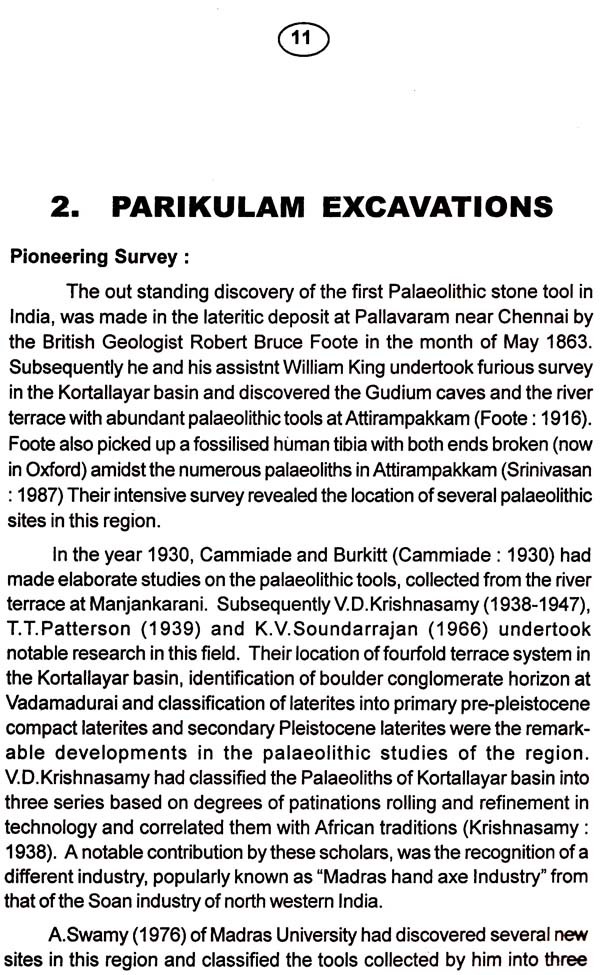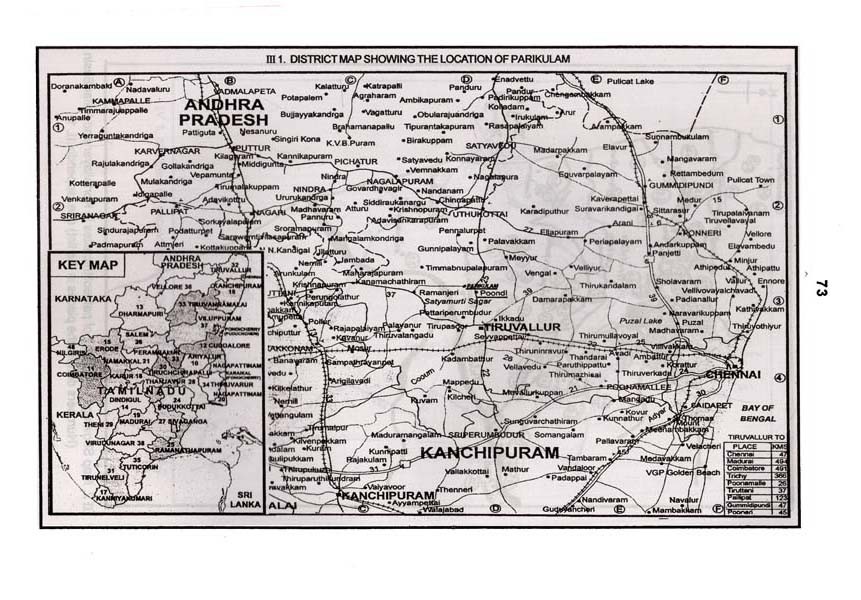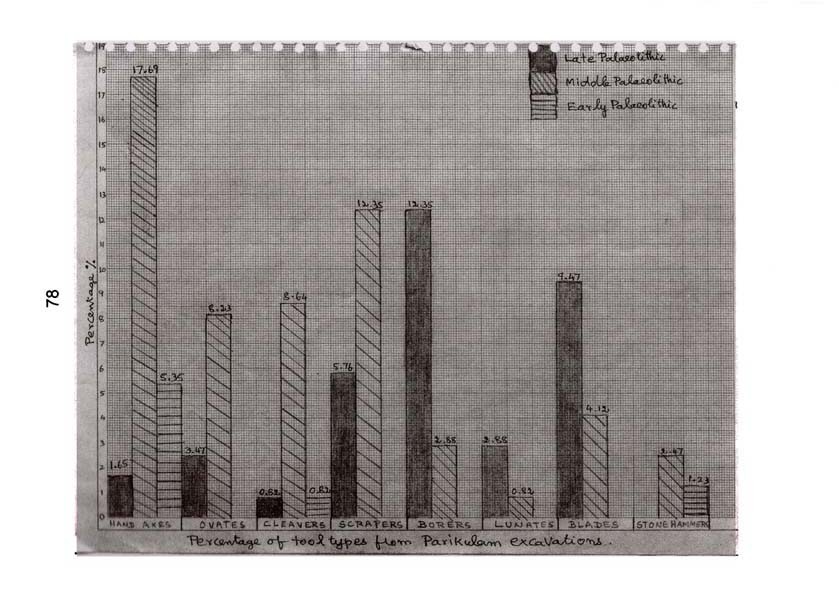
Parikulam: Excavation of Archaeological Sites in Tamilnadu- An Old and Rare Book (2005 - 2006)
Book Specification
| Item Code: | UAQ975 |
| Author: | Sitharam Gurumurthi |
| Publisher: | Tamil Nadu State Department of Archaeology |
| Language: | English |
| Edition: | 2006 |
| Pages: | 108 (Throughout B/W Illustrations) |
| Cover: | PAPERBACK |
| Other Details | 9.50 X 7.00 inch |
| Weight | 190 gm |
Book Description
The "Madras hand axe industry" occupies a very important place in the history of Indian Palaeolithic archaeology. There are more than 110 Palaeolithic sites in and around Kortallayar (old palar) basin. There sites comprise in both rock shelters and open air sites. These include the well known sites of Gudiyam caves, Attiarampakkam, Poondi, Vadamadurai, Parikulam and others. They have yielded several palaeolithic artefacts which are of immense importance in Indian Palaeolithic research. Systematic palaeolithic studies in this region indicate that these sites point the extensive movement of the early hominids across the landscape or lakhs of years or more.
There is an another important industry called "Soan industry" located in the soan valley, a tributary of the river Indus in North western fron thier of India. Several Palaeolithic sites are noticed in this valley. Soan Industry tools belong to unifacial culture while the Madras industry belongs to bifacial culture. Scholars both from abroad and India had made elaborate studies about these two industries.
The history of chennai as most of us know started from the time the British established their trading company here, but astonishingly chennai (Madras) has been a place of habitation for prehistoric hominids who had lived here millions of years ago. The chain of discoveries had stcarted off when Sir Robert Bruce Foote accidentally discovered a stone tool at Pallavaram on 30th may 1863 CE, followed by the discovery of many number of artefacts in and around Poondi, near Chennai. This tremendous discovery in the field of prehistoric archaeology pushed back the antiquity of man in Tamil Nadu to more than half a million years ago and placed this region on the world map of prehistoric culture.
Interestingly the sites around Poondi reservoir, from where our city derives its water, turns out to be significantly important for archologists and geologists around the world Gudium cave, the first of its Rind in India, discovered by geologist Sir Robert Bruce Foote exists near Poondi in Tiruvallur Taluk of Tiruvallur District, and reaching there takes some adventurous paths into the silent forests, which can actually turnout to be a nice expedition for trekkers and even nature lovers.
Millions of year ago, man did not live as we live to day. He lived in jungles like most of the animals. It was very difficult to dig out roots or to kill animals with bare hands. So, he needed to use tools. He found that stones and rocks could be shaped to do his job easily. He picked up heavy stones and rocks, sharpened them and tied them to sticks with nerves and used them as spears. These were his first tools. Thus he could dig out roots with sharp edged stones or kill an animal without going very near it. The first tool that man made were not very good but served his purpose. Some of these tools have been discovered from ancient caves and are kept in museums.
**Contents and Sample Pages**














